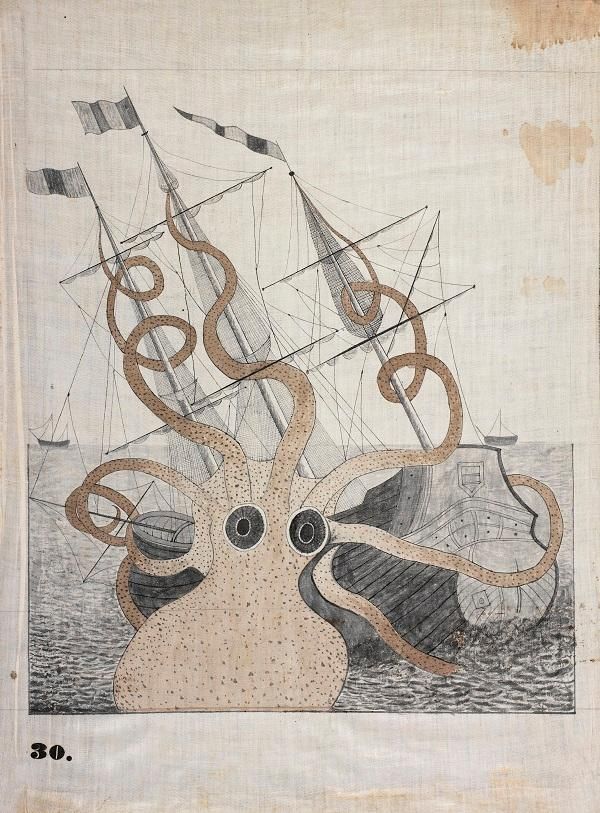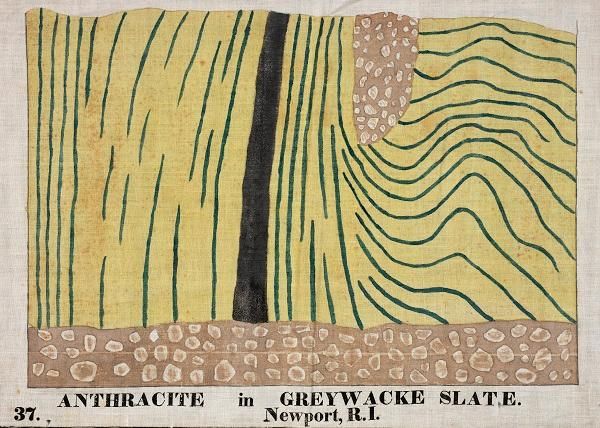Art, Science and Religion Blend in Exhibition Honoring Illustrator Orra White Hitchcock
Orra’s paintings and drawings depict the natural world in colorful detail
/https://tf-cmsv2-smithsonianmag-media.s3.amazonaws.com/filer/7b/0a/7b0a113b-2bbc-4282-b703-324700ee0ebc/mastodon.jpg)
Students in Edward Hitchcock’s Amherst College lectures were lucky: The theologian and geologist was one of the mid-nineteenth century’s leading scientists, and his classes featured the added benefit of exquisite visual aids. Painted onto sheets of cotton, some measuring more than 12 feet long, these guides to the natural world depicted phenomena ranging from the contorted lines of a Deerfield, Mississippi, bed of clay to the curved tusks of an elephant’s ancestral predecessor. Works of art in their own right, the canvases remained unsigned, created merely as supplements to Hitchock’s lessons.
Nearly 200 years later, the enigmatic woman behind these works—Edward’s wife Orra White Hitchcock—is finally receiving recognition as one of the country’s first female scientific illustrators. Charting the Divine Plan: The Art of Orra White Hitchcock (1796-1863), a new exhibition at the American Folk Art Museum in Manhattan, draws on more than 100 original works and a plethora of personal correspondence and diaries to present a portrait of a figure dedicated to the seemingly contradictory fields of art, science and religion.
According to the Huffington Post’s Priscilla Frank, curator Stacy Hollander first learned about Orra in 1997, when the museum acquired a surprisingly detailed watercolor she had painted in 1810 at age 14. Hollander connected Orra to Edward, a far better-known figure, and found documents related to the couple in Amherst’s archives. Soon, she had pieced together a vision of Orra, whose early writings suggested prodigious knowledge of scientific concepts that later enabled her to create the colorful illustrations at the heart of the exhibition.

Born in Amherst, Massachusetts, in 1796, Orra showed an aptitude for science and math from a young age. The New York Times’ Jason Farago writes that she knew how to calculate syzygies, or an alignment of celestial bodies used to predict eclipses, at 14, the same age at which she painted the watercolor that first caught Hollander’s attention. At 17, Orra started teaching art and science at the local Deerfield Academy, where she began a relationship with principal Edward Hitchcock. The pair married in 1821, embarking on a lifelong journey defined, according to the museum, by their shared love of “faith and science, mutual respect, close observation, and mental capacity for the largest of ideas.”
Frank writes that the couple often embarked on foraging trips across Massachusetts. While Edward documented the unique characteristics of flower and mushroom specimens, Orra sketched them, translating her husband’s words into life-like watercolor and ink drawings. This collaborative partnership continued throughout Edward’s tenure at Amherst—he began teaching at the college in 1826 and served as its president between 1845 and 1854—and led the Hitchcocks to produce dozens of books and articles featuring Edward’s writing and Orra’s artwork.
In his memoirs, Edward praised Orra’s contributions to the field, writing, “Mrs. Hitchcock has been steadily at work for thirty-six years, whenever called upon to supply my numerous demands. And that too without the slightest pecuniary compensation, or the hope of artistic reputation. For so large and coarse have been most of the drawings that she never felt flattered to have others told she was the author of them.”

The creations Edward describes—large-scale illustrations and charts depicting concepts from geology, botany, zoology and anatomy—include multi-color cross-sections of layered rock, detailed records of spiraling shells and fossils, and deceptively simple renditions of the Earth’s crust, which Orra portrayed as a perfectly symmetrical peach-colored circle.
To the Hitchcocks, these classroom works represented a tangible manifestation of their interdisciplinary interests. As the New York Times’ Farago writes, “The discovery and depiction of nature’s workings overlapped seamlessly with all the other parts of [Orra’s] life, and fused with family and church into a single vision of the world’s splendor.”
Edward may have received the majority of the credit for the couple’s collaborations, but their relationship was far from one-sided. During the pair’s lifetime, Orra never reached the national acclaim enjoyed by her husband, but she “was pretty widely recognized by students and by his own peers as well,” Hollander tells Frank. “More than one person commented that Edward might not have achieved what he did without her. They were a match made in heaven.”
Orra died in 1863 at age 67, and Edward followed in 1864. The two are buried together in Amherst, the city they inhabited for most of their lives. His grave’s inscription: “A leader in science, a lover of men, a friend of God: Ever illustrating the cross in nature and nature in the cross.” Hers: “Daughter of Harib & Ruth White & for 42 [years] wife of Edward Hitchcock.”
Charting the Divine Plan: The Art of Orra White Hitchcock (1796-1863) is on view at the American Folk Art Museum in Manhattan through October 14, 2018.
/https://tf-cmsv2-smithsonianmag-media.s3.amazonaws.com/accounts/headshot/mellon.png)
/https://tf-cmsv2-smithsonianmag-media.s3.amazonaws.com/accounts/headshot/mellon.png)